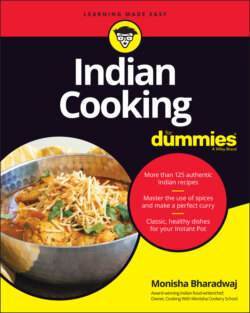Читать книгу Indian Cooking For Dummies - Monisha Bharadwaj - Страница 88
Mangoes
ОглавлениеThe concept of eating seasonally is still very popular in India. Farmers markets in the winter are filled with dark orange carrots and gleaming white cauliflowers. But it’s the summer markets that excite me the most. Every year, around April (start of the summer in India), all of a sudden you see stalls filled with mangoes start to pop up in these markets. These aren’t just any mangoes either — they’re the most fragrant, sweetest, firmly fleshed mangoes in the world. The mighty Alphonso mango is arguably India’s best loved variety, and shoppers are willing to pay any price for those first few boxes. The price never really comes down because the season is short and demand is high. It’s no wonder that the mango is the national fruit of India. Alphonso mangoes are grown in a small region of India in the western state of Maharashtra. Other mangoes, such as the not nearly as good Kesar mango from Gujarat, start to appear a few weeks later.
Then as suddenly as they appeared, the Alphonso and Kesar disappear with the first rains of the monsoon season in June. It’s astonishing to me that the end of the season is so final — you see them in the market one day and they’re gone the next.
Then arrive the monsoon varieties, which are also delicious but don’t seem to have the glamour of the Alphonso. These varieties also quietly leave the market as the monsoons fade away in September.
You’ll find fresh Alphonso mangoes in some Indian stores during the season, although I’ve heard that each year availability could be affected due to import bans. Happily, there is an alternative: Cans of Alphonso and Kesar mango puree are available year-round, so you can easily whip it into ice creams and drinks like smoothies and Aam ki Lassi (Mango and Yogurt Drink; see Chapter 21). You may find cans of sliced Alphonso mangoes in syrup, but I find them too soggy for my liking.
